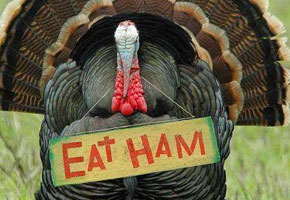
Talking Turkey about Labels
By Dave Carter | 0 Comments | Posted 11/26/2014
Let’s talk turkey.
More specifically, let’s talk turkey labels.
If you haven’t done so yet, you’ll likely be headed to the store in the next day or two, looking for the perfectly plump bird to set in front of your family for Thanksgiving. These days, in addition to choosing the right weight to provide enough leftovers for turkey sandwiches—but not so much that you are serving turkey tetrazzini 10 days later—there are a lot of different labels. Let’s take a look.
First of all, don’t spend too much time looking for turkey labeled as cage free. That’s because turkeys aren’t raised in cages, so they are all cage free.
Free-range, though, is a label growing in popularity. To qualify for free range labeling, the birds must be able to roam freely, and to have appropriate access to the outdoors.
Some turkeys are starting to show up in the meat counter bearing Non-GMO labeling. This is a bit of a tricky one because there aren’t any genetically modified turkeys approved for sale to the public. The labeling, though, provides assurance that the turkey was fed a diet verified to contain less than 0.9% genetically engineered feed (that level is allowed because of the unavoidable cross-contamination of GMOs in non-GMO feed.
Then, there are a slew of humane certification labels, like Certified Humane and American Humane Certified. These are labels that confirm that the birds were raised in humane conditions as verified by auditors working for the non-profit agency that authorizes the use of that label.
Of course, the easiest way to make sure that you are selecting a turkey that meets all of those qualifications is to look for the USDA organic seal. Any bird certified as organic has to have access to the outdoors, be fed a diet free of GMO material, and raised under humane care standards.
That will help you sleep better after that huge Thanksgiving dinner.


 Contact us
Contact us



























